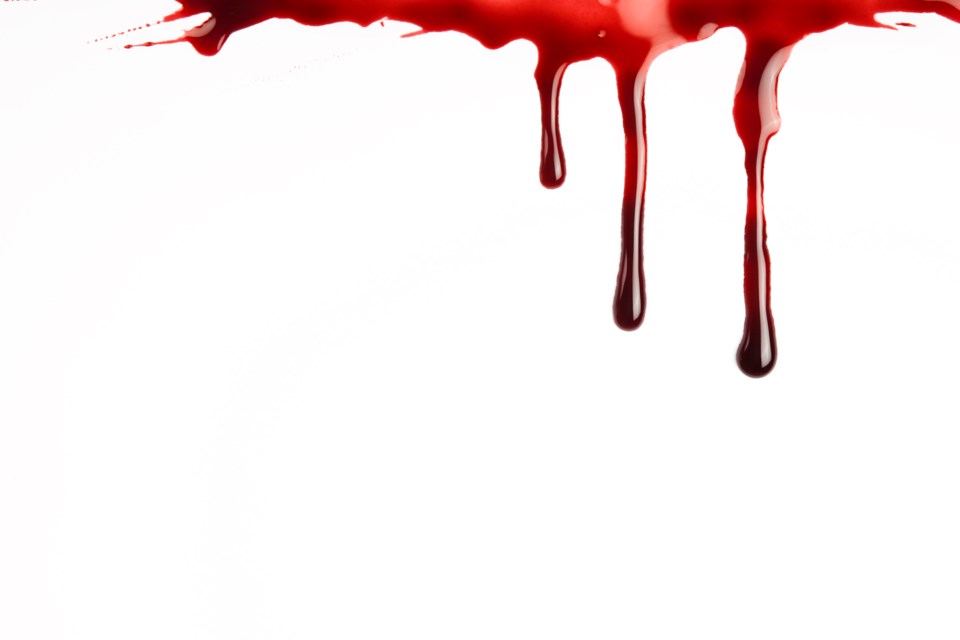One common criticism levelled at the media is its tendency to focus on death and tragedy in what some see as an unhealthy, exploitative way. “If it bleeds,” the saying goes, “it leads.”
Social media tends to go lower, faster. Before those text alerts went out about gunshots in the village last Sunday, a post appeared on a local Facebook page that included some graphic photos and footage—a man, shot in the head, laying on the road. Another person was laying on the ground a little further away with no blood visible, but also clearly not OK.
People reacted angrily and the post was quickly taken down. The implication was that a line was crossed, that it was in bad taste to post images of a double murder, that friends and family of the victims shouldn’t learn about a fatal attack on a loved one through Facebook.
While those people have a point when it comes to social media, the reality is that Canadian media—despite its bloody reputation—is relatively sanitized in the way it presents violence. Networks will occasionally show blood after warning people about the graphic nature of the footage, but they will never show bodies or footage of people dying or being wounded. Photos in newspapers tend to be of blood on the road or behind police tape, but that’s about it.
There are some people, and I happen to be one of them, who think the news isn’t nearly bloody enough.
Every few days it seems we hear a story about a murder somewhere in B.C., to the point I think we’ve become desensitized to the general idea of homicides. It doesn’t affect us nearly as much as it should. That’s partly because it’s common, but largely also because we don’t actually see it—the violence or its effect on victims. If we truly understood what it was like, I suspect people would be more sympathetic to victims, as well as more supportive of programs to reduce guns and violent crime. While we all see hundreds of people gunned down in movies and TV shows, the real thing is infinitely worse.
In European media, it’s a different story. They tend to show far more graphic footage and photography, which is part of the reason why they have far more stringent gun laws in most jurisdictions. People know what it looks like when someone is killed and are horrified enough to take action to try to prevent it from happening again.
When a gunman walked into a school in Uvalde, Texas and shot 19 children and two teachers, a debate kicked off—or rather, kicked off again—in the media over whether it was time to start showing people what mass shootings really look like. Continued inaction on gun control—even measures that more than 80 per cent of people support and would have prevented a number of recent high-profile school shootings—had many wondering if the only way to force change was to force people to see what it really looks like.
“What we don’t see is the reality of these rifles’ decapitating children in Uvalde, Texas; shredding organs until they look like ‘an overripe melon smashed by a sledgehammer’ at a high school in Parkland, Fla.; and leaving at least one person, according to [obstetrician David] Baum, with an ‘unspeakable head injury’ in Highland Park,” wrote Charles M. Blow, in a July 6 opinion piece published in the New York Times.
“But should America be forced to confront the truth of the carnage it so often ignores? Would these images shock the country out of its morbid malaise and into action to address an unconscionable—and fully preventable—public health crisis that guns have created?”
There are lots of good counter arguments against showing bloody images. One is that it could cause more pain for the families of victims. Another is that people could become desensitized to more graphic images, which wouldn’t be a good thing for society. It has also been argued that these images could somehow inspire more shootings.
However, the central idea is that graphic photos and footage would be carefully selected, with the permission of the families, and then presented respectfully. These types of images would only be released on very rare occasions when it is deemed in the public interest.
It’s also worth noting that European media also shows more graphic footage of war and conflict, which is likely one of the reasons so many were opposed to the American war in Iraq—they had a better idea of what war really looks like and why it shouldn’t be entered into casually. They don’t have a romanticized, glorified and sanitized view of conflict where the only images people are allowed to see are coffins draped with flags or distant explosions taken by satellite.
As well as graphic crime and war, there’s an argument to be made for showing more footage from traffic incidents. If people knew what accidents really looked like, they would probably drive more slowly, more safely, and more soberly as well.
The media doesn’t only exist to reflect society as it is, but also to provoke positive change. Sometimes the only way to do that is to show the bloody truth.




